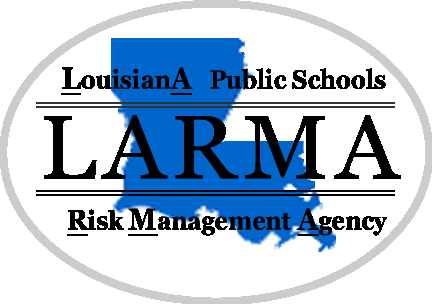Information
-
Document No.
-
Audit Title
-
Client / Site
-
Conducted on
-
Prepared by
-
Location
-
Personnel
SITE SAFETY REVIEW GUIDE
Preparing to conduct a Site Safety Review
-
Prior to attending site, review as much relevant safety data as you can. Consider looking at last month's statistics, incident reports and risk profile.
How to complete the form
-
Use the questions as prompts only - be guided by the feedback you receive on site and the observations that you make. Fill in as much information as you can about the Systems, Behaviours and Plant that you can identify.iUse the questions as prompts only - be guided by the feedback you receive on site and the observations that you make. Fill in as much information as you can about the Systems, Behaviours and Plant that you can identify. Any additional comments can be filled out in the comments section. Identification of positive behaviours is as important as identification of issues of concern.
Consider how you 'frame' your safety questions
-
When discussing safety with workers consider asking them to identify their 'Personal Big Five' - those things that are important to them. Safety buys me my personal big five. Consider your language - helpful versus hindering language. Ask questions - don't make assumptions. Be mindful of your Leader Frame - provide feedback, be supportive. Follow up to ensure that actions have been addressed. Discuss improvement opportunities - what's your 50%?
Following the review
-
Forward the completed form to the GM Safety and CEO
Outcomes
-
Outcomes and actions from Site Safety Reviews will be reviewed once a month at the Executive Leadership team meetings.
STOCKS
-
Bin board present
-
GT bin list and bin board match up or similar allowing for same day movements
-
Storages volumetrically checked
-
Site indicates understanding if god stock management systems and process
SYSTEMS & COMMUNICATIONS
-
Is the monthly Safety SHARP report displayed?
-
Are the latest Safety Committee minutes displayed?
-
Is the latest Safety Alert displayed?
-
Is the Site Operations Manual (Onsite & Current)
-
Confined Space Entry Permits (Retained & Properly completed)
-
Discuss with workers their understanding of Mini WRAC / Take 5 assessment?
-
Find out the site Top Five risks. Is there a WRAC for each?
-
What safety training has been undertaken recently and who/how many attended?
-
What is your main safety concern? Have you reported it? How is it being managed?
-
Do you have any suggestions in how safety management can be improved?
-
Is the GrainCorp "What to do if you are injured at work" poster clearly displayed? Does it include the trained RTW Coordinators details?
-
Are there any employees undertaking a graduated Return-to-Work (RTW)? Is there a current documented RTW plan in place?
PLANT/EQUIPMENT
-
Main Site Entry, Signage (current) & in good repair, Traffic Management Plan available and traffic signage in place.
-
Site Emergency Information (Onsite & Completed)
-
Housekeeping - are trip hazards removed, is equipment stored safely, is rubbish cleaned up in all areas?
-
Is appropriate PPE being worn eg hard hats, glasses, hearing protection, enclosed footwear, high visibility etc,
-
Are appropriate safety signs displayed and in good condition? E.g. Confined Spaces, PPE, traffic directions, visitor information, Take Five etc?
-
Have all physical site risks been identified and appropriate controls put in place?
-
Environmental Issues - Oil/fuel spills evident, Surrounds in tidy condition and Tarps/plastic stored appropriately?
BEHAVIOURS
-
Can you observe people working safely? Are hey following all procedures? (Sight last confined space permit completed or plant and pedestrian interface)
-
Did everyone attend a Toolbox meeting this morning? Can they remember what safety topics were discussed?
-
How many Near Misses or hazards have been reported? What was his site's last Near Miss? What corrective actions were raised and what is their status - closed, interim controls, behind schedule, no action required.
-
Are workers aware of the hazards? Do they understand how to prevent these hazards from injuring them?
-
Motor vehicles clean and well presented
-
Staff wearing appropriate uniform
OVERHEAD POWER LINES ON SITE
-
Signage in place
-
Lines unable to be touched by raised truck/conveyor etc
AMENITIES
-
Clean condition
-
In good working order
-
Fire Extinguisher / smoke alarms
-
First Aid kits/eye wash facilities
SAMPLE STAND & WEIGHBRIDGE
-
Facilities & furnishings in good condition
-
Slip / Trip hazards
SHED COMPLEX/s & WALKWAYS
-
Sheds in Good condition
-
Access secure / Restricted to employees
-
Hoppers & lids
SILO STORAGES & WALKWAYS
-
Access restricted / Security adequate
-
Fall protection in place
-
Cages in pace
-
Confined Spaces Marked & Secured
-
Silo hoppers lids in place
-
Pits guarded from falling into
-
Fumigation - piping marked/caged
BUNKERS
-
Fencing adequate for securing site
-
Guards fitted to equipment
-
Storage obtained on site
-
Lifting chains in good condition / tagged
AUGERS / CONVEYRS
-
Guards fitted and in good condition
-
Hydraulic lifting in place
-
Electrical cables in good condition
-
Drive Over Hoppers in good condition
OTHER PLANT & MACHINERY
-
Guards fitted and appropriate
-
Generators
-
Per-Start log book completed
-
Livening / Log books appropriate
RAIL ACTIVITIES
-
Platforms & spouts in god repair
-
Access restricted to employees
-
Walkways & surrounds in good condition
-
Protruding items marked / highlighted
-
Lighting present / working
SWITCH BOARDS
-
Are switch boards secured
-
Is access restricted (Signage)
PESTICIDE APPLICATION
-
MSDS on hand
-
Tanks bundled / spill kit on hand
-
Containers clearly marked
-
PPE stored away
MAINTENANCE / WORKSHOP
-
Clean & Tidy condition
-
Safety signage in place
-
Current Test & Tag on Electrical Equipment
-
Spill kits as required
-
Gas bottles secured
ENVIRONMENTAL
-
Oil / fuel pills evident
-
Surrounds in tidy conditions
-
Tarps / plastic stored appropriately
-
Erosion, especially around culverts
CORRECTIVE ACTIONS
-
Outline each corrective action and where required if a near miss or incident report should be raised immediately. Corrective actions should be included and tracked in the SHARP system once agreed. The task can be described in general terms requesting the team to develop a more specific action/s. an expected outcome should result in the action being closed or brings the practice into an acceptable level of risk for the company.
-
Task and expected outcome 1
-
Due date
-
Task and expected outcome 1
-
Status Comment
-
Task and expected outcome 2
-
Due Date
-
Task and expected outcome 2
-
Status Comment
-
Task and expected outcome 3
-
Due Date
-
Task and expected outcome 3
-
Status Comment
-
Task and expected outcome 4
-
Due Date
-
Task and expected outcome 4
-
Status Comment
-
Task and expected outcome 5
-
Due Date
-
Task and expected outcome 5
-
Status Comment
-
Task and expected outcome 6
-
Due Date
-
Task and expcted outcome 6
-
Status Comment
-
Task and expected outcome 7
-
Due Date
-
Task and expected outcome 7
-
Status Comment
-
Task and expected outcome 8
-
Due Date
-
Task and expected outcome 8
-
Status Comment
-
Task and expected outcome 9
-
Due Date
-
Task and expected outcome 9
-
Stats Comment
-
Task and expected outcome 10
-
Due Date
-
Task and expected outcome 10
-
Status Comment
STAFF SITE ISSUES RAISED
-
Item 1
-
Item 2
-
Item 3
-
Item 4
-
Item 5
-
Item 6
-
Item 7
-
Item 8
-
Item 9
-
Item 10
COMMENTS
SIGNATURES
-
Add signature
-
Add signature
-
Add signature
-
Add signature
-
Add signature










